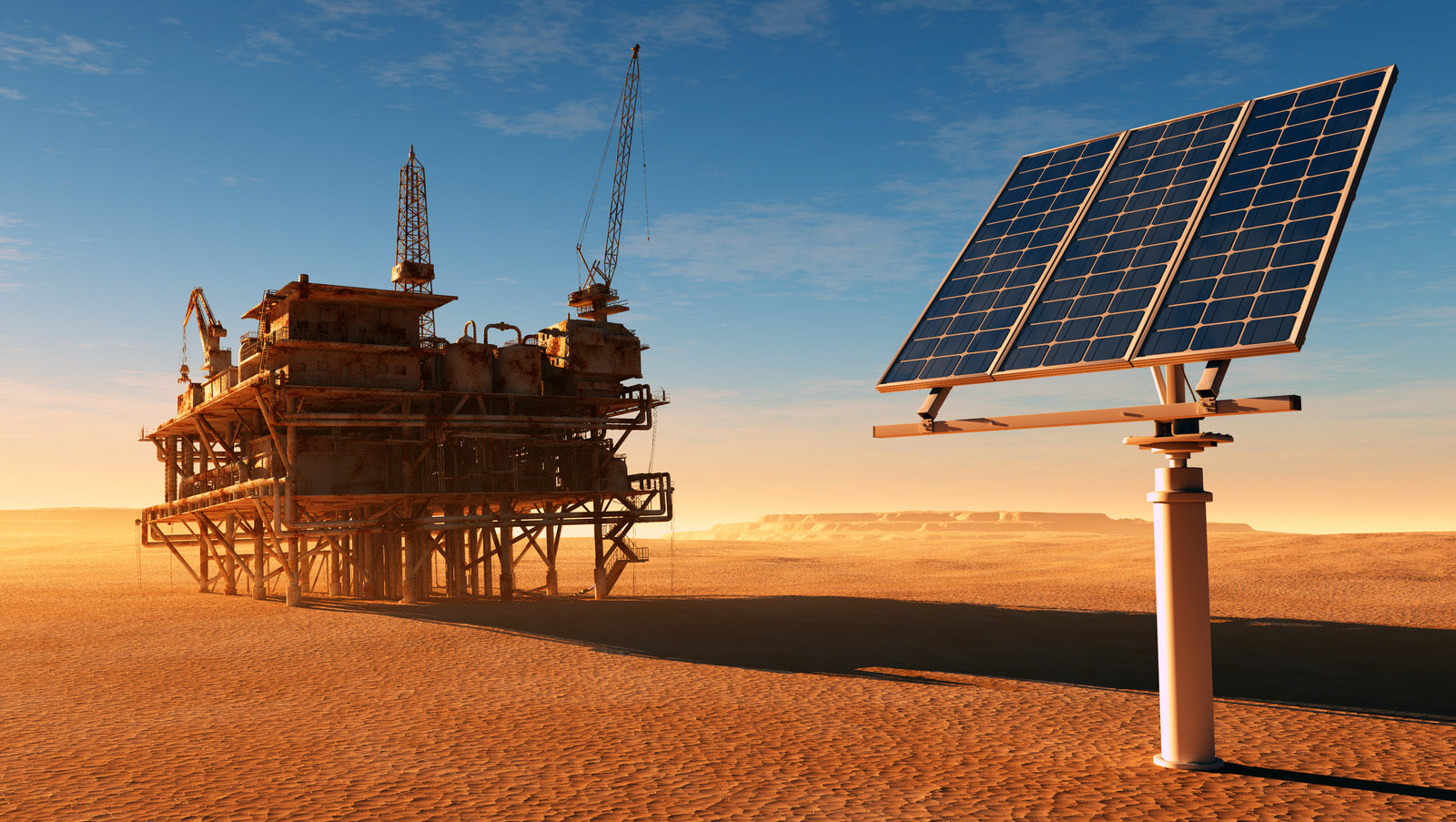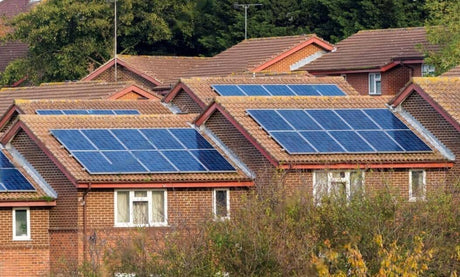When planning a solar installation, there are some important considerations to keep in mind, especially if you’re planning on mounting panels to your roof. Not all roofs are created equally in the realm of solar panels. Which direction should your roof and panels face? What’s the best roofing material for solar, and how do you know if your roof is suitable for solar?
What are roof-mounted solar panel systems?
First off let’s talk about what goes into roof-mounted solar panels. Roof-mounted solar panel systems are typically available in a flexible or rigid form. Both are secured to the roof with bolts, brackets, and mounting hardware. Rigid panels are the most durable option. Renogy’s roof-mounted panels include a corrosion-resistant aluminum frame that is great for extended outdoor use, allowing the panels to last for decades. Flexible panels offer a low-profile look and are lightweight and easy-to-handle.
What is the best roofing material for mounting solar panels?
Solar panels can be mounted on clay tile, metal standing seam, asphalt, EPDM rubber, and TPO and PVC. Wood shake and slate tile roofs present some unique challenges, and we recommend consulting with a professional about mourning to those surfaces.

What should I consider when evaluating my roof?
- Roof age and condition: You’ll want to make sure your roof is in suitable shape to hold solar panels and that it isn’t due for a replacement. If your roof is nearing the end of its lifespan, you’ll want to replace your roof before installing solar. A solar panel system will last you 30 to 35 years. If your roof is between five and 10 years from needing replacement, it’s a good idea to hire a professional to assess the condition of your roof. How long do roofs last? Every roofing material has a slightly different lifespan. As some general guidelines, clay tile, slate, and copper roofs can last up to 50 years, wood shake roofs have about a 30 year lifespan, and cement shingles last about 20 years. Replacing your roof before installing solar means you won’t have to tear everything out just a few years into having your installation, which will save you lots of money in the long run.
- Shade on roof: Although the output will be greatly reduced, solar panels will still work in the shade, just at a lower capacity. A general rule of thumb is that solar panels will produce about half as much energy as they would with direct sunlight. Trees located to the north of your home will typically pose the least amount of shading obstruction for panels. Trees planted on the south side can block midday sun, which is a crucial time for solar power production. Your roof itself can also present shading challenges. Dormers, gables, and chimneys in particular can obstruct sunlight from your panels, as well as create some obstacles for mounting your solar panels themselves.
- Which direction your roof faces: Typically, solar panels work best on a south facing roof (in the northern hemisphere). When panels are pointed east, they produce a lot of energy in the morning, but they will produce very little in the afternoon. The reverse is true if they face west. Solar panels will receive almost no direct sunlight if they are facing north. Solar panels actually work best when they’re facing true south, which is slightly different from magnetic south. We recommend using Google Maps to look up your property, display the grid, and see which direction true south is. If you can’t mount your panels to be at true south, southeast and southwest-facing panels will also work.
- Flat or sloped?: Solar panels can work on both flat and sloped roofs. If you have a sloped roof, the best angle is between 30 and 40 degrees. Any steeper and the performance of your panels will not be efficient. In order for the panels to be self-cleaning, they should be at a minimum of 15 degrees.
- Surface area of your roof: You’ll also need to make sure you actually have room on your roof for solar panels. A large, rectangular roof with no chimney or vents is, of course, ideal for solar rooftop installation. This can be somewhat rare, but you’ll want to make sure that you have enough space for the amount of panels you need to meet your energy needs. If you haven’t already, use the Renogy solar panel calculator to calculate how many solar panels you’ll need to meet your energy needs.
- Are you in an HOA with regulations? If you live in a subdivision governed by an HOA, you may not get the last word about your solar panel installation. Many HOAs have regulations governing the outer structure of homes, roof included. If you’re considering a rooftop solar installation, you can reach out to your HOA beforehand to see if it has an existing policy on solar panels. The HOA will be able to provide you with its guidelines and point to the specifications that must be adhered to.
What if my roof is not suitable for solar?
If after considering all the above factors, you come to the conclusion that your roof is not suitable for solar panels. You can either install a ground-mounted solar panel system elsewhere on your property, purchase a portable solar panel kit if you have smaller energy needs, or build a solar panel carport to create a surface to mount your panels, as well as shade your car.
Will solar panels damage my roof?
No, not if your solar panels are mounted properly.It’s true that mounting solar panels does require the right mounting hardware in order to safely and securely attach the panels to your roof. However, if done correctly, solar panel installation should not damage your roof or the surrounding structure. Additionally technology has continued to improve where mounting solar panels has never been easier. In some cases, solar panels can actually protect your roof instead of inflicting any sort of damage.
Conclusion
Installing solar panels on your roof can be incredibly intimidating at first. However, by considering the above factors you’ll be well on your way to a safe, secure, and efficient solar panel installation for your home.









